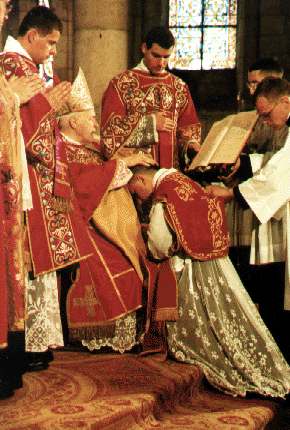What does it take to become a full-fledged Soto-shu priest and is it really worth the whole deal?
Part 9 – About the meaning of the vertical and horizontal structure of the sangha

First, there is an interesting discussion that is connected to the topic of this and past articles over at the Zen Forum International: KNOCKING DOWN MONASTERY WALLS.
During the past articles of this “What does it take…”-series, I tried to explain a little about the details of the different steps of the career of a Zen monk in Japanese Soto-shu (and also about the meaning and importance of monastic training). Now let us get to the second part of the question: “Is it really worth the whole deal?”
I guess the answer is simply: “You have to decide for yourself”.
Personally, I have thought of leaving Soto-shu myself in the past. As Antaiji is not property of Soto-shu, it would be possible for me to become independent and start my own Antaiji school. This would have several advantages:
1) I would not be a tiny part of a big franchise anymore, one out of 15.000 temples that belong mainly to lazy sons who inherited their father’s property without being interested in Buddism at all. I would represent myself, not a big, conservative and sometimes corrupt religious organization.
2) I would not have to pay the annual fees to Soto-shu that amount to more than 1000 dollars/year, plus extra fees whenever a monk ordains, does hossen-shiki or other ceremonies are performed.
3) I would not receive monthly magazines, flyers and posters from Soto-shu anymore, printed paper that ends up in the kitchen stove anyway.
I am surprised that some people come to Antaiji and ask to be reordained, although they already have received ordination in Europe. They usually tell me: “Yes, I am already a monk, but my ordination is Europe is not recognized by Japanese Soto-shu. If I ordain here at Antaiji, I will be an official Soto-shu monk.”
In fact, you can be regisitered as an official Soto-shu monk at the headquarters in Tokyo if you ordain outside Japan, as long as your teacher (who does not have to be Japanese) is registered at the headquarters as well. This means that your teacher, and in consequence yourself as well, officially belong to one of the 15.000 Japanese Soto-shu temples. Usually, this is the temple where your teacher or your teacher’s teacher ordained in Japan, or where they are the official head-priest. In the case of Antaiji, quite a lot of monks and nuns are registered here officially who have never been to Antaiji or met me in person, because they ordained in Europe or America with a teacher who officially belongs to Antaiji. All their official documents (and the fees etc.) usually need to be forwarded to the headquarters via Antaiji.
Why, that is our question, why would it be important to anyone to be officailly part of this big club called Soto-shu?
Well, again I think the answer depends on the person. For myself, I can think of the following advantages of being part of Soto-shu, rather than being independent of Soto-shu:
1) Every monk or nun registered at Antaiji automatically has access to any of the 30-something official Soto-shu training monasteries in Japan, Eiheiji being the most famous of them. If you are not an official Soto-shu monk, you may visit these places as a tourist, but in most cases you need to be a registered monk to be accepted for formal, long term training. If Antaiji became independent of Soto-shu, all of my students as well as all of the other monks and nuns registered here would probably loose this valuable opportunity.
2) As a member of Soto-shu, I have a certain responsiblity towards this organization. On the other hand, I do not have to prove all the time that I am a “real” Zen master, just as good or even better as the “others”. I can leave it to the organization to set certain standards. In the case of Soto-shu, these standards are not too high. Still, they make sure that there are not too many crooks inside the organization. If I became independent, I would have too prove to myself and everyone else all the time that I am a “real Zen master”, although not authorized by anyone except me and my master.
3) This connects to the third and maybe most important meaning of being part of a bigger religious organization: You connect horizontally to a large number of individuals who do not necessarily share your perspective. That can be a pain in the ass, but by allowing others to check and question you and your ideas and values, you stay real. If I became independent, I would only be vertically connected to the lineage, through my teacher and my teacher’s teacher etc. Some people might assume that this is old-school Buddhism. In fact, it is not. It is a realtively new developement that a student is responsible first to one and only one teacher, and only then (if at all) to the sangha as a whole. In the past, and even today in old-school Theravada Buddhism, a monk is admitted into the sangha by all of the members of that specific sangha. When he is expelled, the decision is not made by one teacher, but by the sangha as a whole. In Buddhist history, the horizontal structure came first, and after the death of Shakyamuni, I could imagine that the vertical structure and vertical integration into the sangha was very weak at first. But that led to problems, like the one that is mentioned in the Broken Buddha: “In India today all sorts of disreputable types turn up at the few Thai and Burmese temples in the country and are given ordination as long as they go somewhere else afterwards. They amble off, without training, knowing nothing about the Dhamma, using their robes to make a living and usually giving Buddhism a bad reputation in the process.”
People are accepted into a certain sangha, but then told to move on. No-one is responsible for them, they are responsible to no-one. Probably this problem led to the establishment of a firm vertical teacher-student relation. The student is responsible to one teacher, the teacher responsible for each of his students. But that alone is not enough. Teachers die, or become senile, or simple make errors from time to time. Erratic teachers ordain erratic students. People believe that everyone connected in some way to some lineage must be an enlightened and unfailable being. That is not the case. Therefore, being and staying part of a bigger horizontal structure, however imperfect it may be, has a great advantage. The danger of your linaege turing self-righteous and insane is much smaller.
A fact that is hardly known in the West is that Soto-shu is a democratic organization with a head (called 宗務総長 Shûmusôchô) that is elected by a parliament. The parliament in turn consist of 72 priests that are elected in 36 districts throughout Japan, 2 from each district. The Shûmusôchô selects a cabinet that consists of him and seven other priests who together govern the organization. It is commonly believed that the Kanchô, who is either the head of Eiheiji or Sôjiji, the two head temples, is the boss of Soto-shu. This is not the case. The Kanchô has only representaional functions, the real power lies with the Shûmusôchô and his cabinet. Therefore, the idea that giving more importance to the horizontal structure of the sangha is a relatively new, Western developement, is wrong. Probably most Western sanghas are organized in a much heavier vertical way with no or almost no horizontal control than their Eastern counterparts. And that may be the reason for many of the crazy outgrowths you see here and there in the West. So, anyway, that for me is one of the more important reasons why it is at least healthy, if not absolutely necessary, to stay part of a bigger organization rather than just fight for yourself and “your” lineage.




